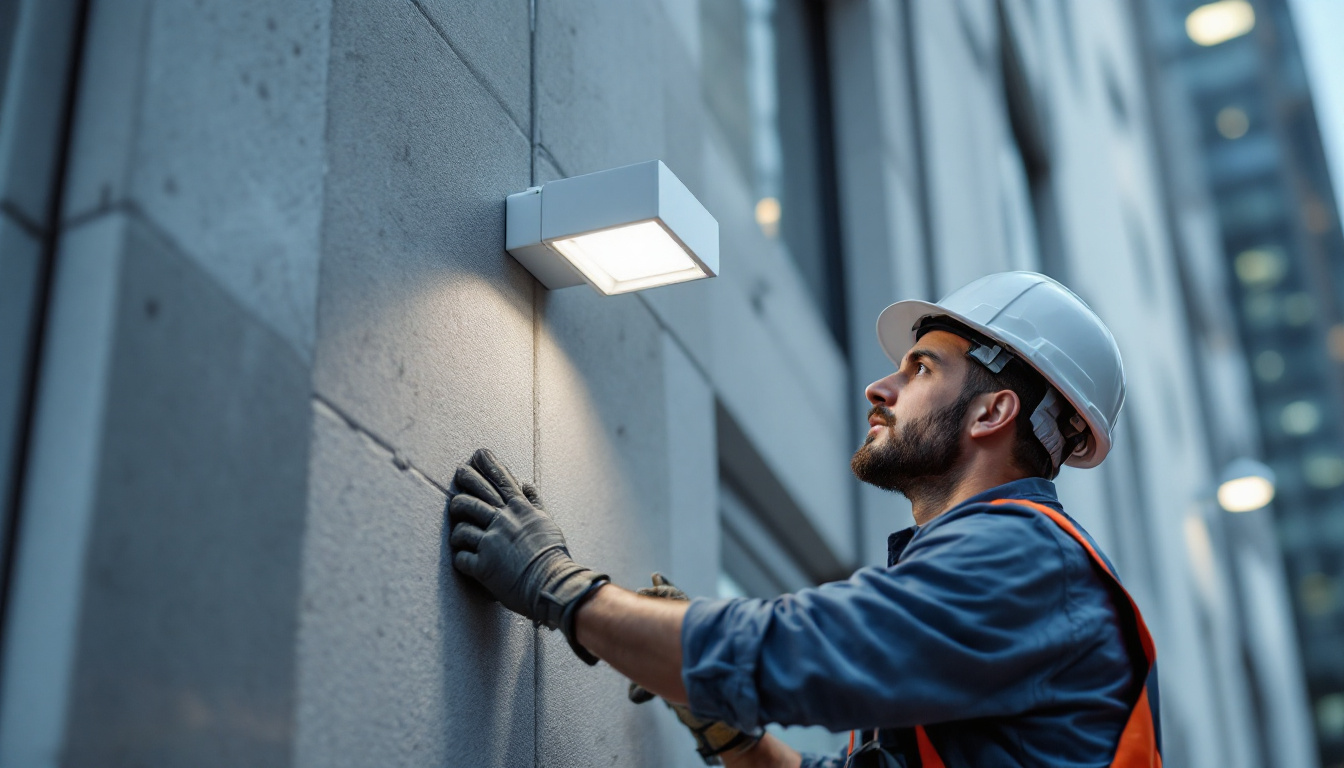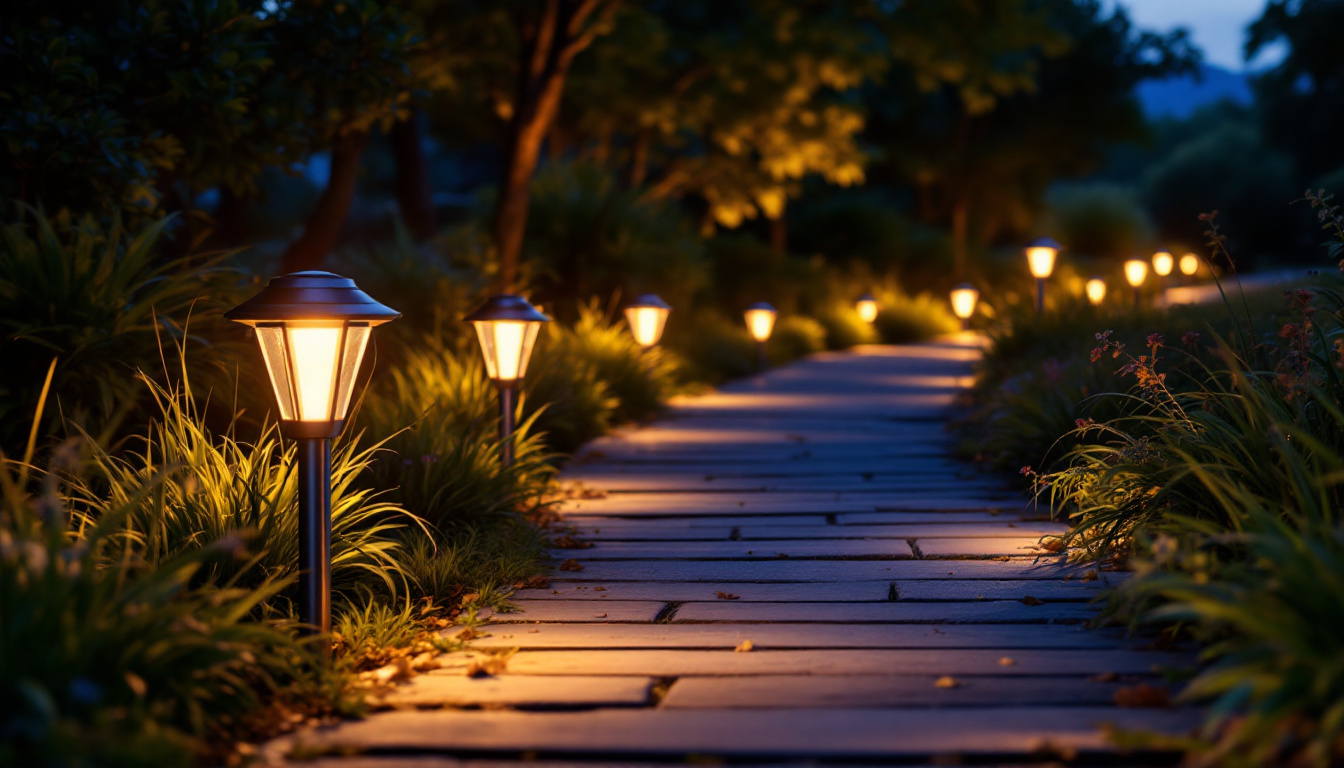
In the realm of outdoor lighting, LED technology has emerged as a game-changer, offering numerous benefits that can significantly enhance the efficiency of lighting projects. As lighting contractors strive to meet the demands of clients while adhering to budgetary constraints and project timelines, understanding the advantages of LED outdoor lighting becomes essential. This article delves into how LED lighting can streamline processes, reduce costs, and improve overall project outcomes.
LED, or Light Emitting Diode, is a semiconductor device that emits light when an electric current passes through it. Unlike traditional incandescent or fluorescent bulbs, LEDs are highly energy-efficient and have a longer lifespan. This fundamental difference in technology not only impacts energy consumption but also influences the overall efficiency of lighting projects. The compact size of LEDs allows for innovative designs and applications that were previously impractical, enabling architects and designers to explore new creative avenues in their projects.
One of the most compelling advantages of LED outdoor lighting is its energy efficiency. LEDs consume significantly less power compared to conventional lighting options, which translates to lower electricity bills for clients. This reduction in energy consumption is particularly beneficial for large-scale projects, such as street lighting or parking lots, where the cumulative savings can be substantial. Furthermore, the ability of LEDs to produce a higher lumen output per watt means that they can illuminate spaces more effectively, allowing for fewer fixtures to achieve the desired brightness, which further enhances cost-effectiveness.
Moreover, the longevity of LED fixtures means fewer replacements and maintenance costs over time. With a lifespan that can exceed 25,000 hours, LEDs reduce the frequency of bulb changes and the associated labor costs. For contractors, this means less time spent on maintenance and more time available for new projects, enhancing overall productivity. Additionally, many LED products come with warranties that guarantee performance over a specified period, providing further assurance to clients about their investment. This reliability can be a significant selling point for contractors looking to differentiate themselves in a competitive market.
As sustainability becomes a key consideration in construction and renovation, the environmental benefits of LED lighting cannot be overlooked. LEDs are free from hazardous materials like mercury, which is commonly found in fluorescent bulbs. This makes them a safer choice for both the environment and the workers handling them. The reduction of waste is another critical factor; since LEDs last longer and are more durable, they contribute less to landfill waste compared to traditional lighting solutions, promoting a more sustainable approach to lighting design.
Additionally, the reduced energy consumption of LEDs contributes to lower carbon emissions. By choosing LED outdoor lighting, contractors can help their clients meet sustainability goals while also appealing to environmentally conscious consumers. This not only enhances the contractor’s reputation but also positions them as a leader in sustainable practices within the industry. Furthermore, as municipalities and businesses increasingly adopt green building certifications, the use of LED technology can play a pivotal role in achieving these standards, making it an essential component of modern construction practices. The integration of smart technology with LED systems also opens up new possibilities for energy management, allowing for dynamic adjustments based on real-time data and further optimizing energy use in various applications.
Incorporating LED lighting into outdoor projects can streamline planning and execution phases. The versatility of LED fixtures allows for a wide range of applications, from pathway lighting to accenting architectural features. This flexibility enables contractors to design lighting layouts that are both functional and aesthetically pleasing.
LEDs come in various shapes, sizes, and colors, providing designers with the ability to create unique lighting solutions tailored to specific project requirements. This design flexibility can lead to more innovative and visually appealing outcomes, which may enhance client satisfaction and lead to repeat business.
Furthermore, many LED fixtures are compatible with smart technologies, allowing for advanced control options such as dimming, color changing, and scheduling. This capability not only enhances the user experience but also allows for more efficient energy use, as lights can be adjusted based on actual needs rather than running at full capacity at all times. The integration of smart technology can also facilitate remote management, enabling users to control their outdoor lighting from their smartphones or tablets, adding an extra layer of convenience and customization.
The installation process for LED outdoor lighting can be more straightforward compared to traditional lighting systems. Many LED fixtures are designed for easy installation, often featuring plug-and-play designs that reduce the time and labor required for setup. This efficiency can lead to quicker project completion times, allowing contractors to take on more jobs and increase their overall revenue.
Additionally, the lightweight nature of many LED fixtures can simplify transportation and handling on-site, further speeding up the installation process. This efficiency not only benefits contractors but also minimizes disruption to clients and surrounding areas during the installation phase. Moreover, the durability of LED fixtures means they are less likely to require frequent replacements or repairs, which further reduces long-term maintenance costs and enhances the overall value of the project. As a result, clients can enjoy a more reliable lighting solution that continues to perform well over time, reinforcing the contractor’s reputation for quality work.
The performance of LED outdoor lighting is another critical factor that contributes to project efficiency. LEDs provide high-quality illumination that enhances visibility and safety in outdoor spaces. This is particularly important for applications such as parking lots, walkways, and public parks, where adequate lighting is essential for user safety. The strategic placement of LED fixtures can significantly reduce the incidence of accidents and crime, creating a more welcoming environment for all users.
LEDs offer superior brightness and color rendering capabilities compared to traditional lighting options. With a higher lumen output and better color accuracy, LEDs can illuminate spaces more effectively, reducing the need for additional fixtures. This not only saves on material costs but also simplifies the design and installation process. Additionally, the energy efficiency of LEDs means that they consume less power while delivering the same or even greater levels of brightness, leading to lower electricity bills for property owners.
Moreover, the ability to choose from a range of color temperatures allows contractors to create the desired ambiance for different environments. Whether it’s a warm glow for a residential pathway or bright white light for a commercial parking lot, LEDs can meet diverse lighting needs while maintaining efficiency. The versatility of LEDs extends to their dimming capabilities, which can be tailored to suit specific times of day or events, further enhancing the adaptability of outdoor lighting solutions.
LED fixtures are built to withstand harsh outdoor conditions, making them a reliable choice for exterior applications. Unlike traditional bulbs that can be fragile and prone to breakage, LEDs are typically encased in durable materials that resist impacts and weather-related damage. This durability reduces the likelihood of failures and the need for replacements, further enhancing project efficiency. In addition, many LEDs are designed with advanced thermal management systems that help dissipate heat, prolonging the lifespan of the fixtures and ensuring consistent performance over time.
Furthermore, many LED products come with warranties that reflect their reliability, providing peace of mind to contractors and clients alike. This assurance can be a selling point when bidding on projects, as clients are often more inclined to choose solutions that offer long-term value and performance. The long operational life of LEDs, often exceeding 50,000 hours, means fewer maintenance visits and disruptions, allowing property managers to focus on other critical aspects of facility management. As a result, the integration of LED technology not only enhances the aesthetic appeal of outdoor spaces but also contributes to a sustainable and cost-effective lighting strategy.
As energy efficiency regulations become more stringent, using LED outdoor lighting can help contractors stay compliant with local and national standards. Many regions have implemented codes that promote or require energy-efficient lighting solutions, making LEDs a practical choice for meeting these requirements.
LEDs typically exceed the performance criteria set by energy codes, allowing contractors to confidently present their projects as compliant. This not only reduces the risk of penalties but also enhances the contractor’s reputation as a responsible and knowledgeable professional in the field.
In addition, many utility companies offer incentives and rebates for projects that incorporate energy-efficient lighting solutions. By using LEDs, contractors can help clients take advantage of these financial benefits, making projects more attractive from a budgetary perspective.
Safety is paramount in outdoor lighting projects, and LED fixtures often meet or exceed safety standards set by regulatory bodies. This includes considerations for electrical safety, fire hazards, and environmental impact. By choosing LEDs, contractors can ensure that their projects not only comply with regulations but also prioritize the safety of users and the surrounding community.
Incorporating LED outdoor lighting into projects offers a multitude of benefits that enhance efficiency, reduce costs, and improve overall project outcomes. From energy savings and environmental benefits to design flexibility and compliance with regulations, LEDs represent a forward-thinking choice for lighting contractors. As the industry continues to evolve, embracing LED technology can position contractors at the forefront of innovation, ensuring they meet the ever-changing demands of clients and the market.
By leveraging the advantages of LED lighting, contractors can not only improve their operational efficiency but also provide clients with high-quality, sustainable lighting solutions that stand the test of time. In an increasingly competitive landscape, the strategic use of LED outdoor lighting can be a decisive factor in achieving project success and client satisfaction.
Ready to harness the power of LED outdoor lighting for your next project? Look no further than LumenWholesale for all your lighting needs. Our extensive selection of top-quality, spec-grade lighting products comes at unbeatable wholesale prices, giving you the competitive edge you need. Say goodbye to inflated markups and hello to reliable, high-performance lighting that meets the highest industry standards. Plus, with free shipping on bulk orders, you can enjoy the best value without any hidden fees. Elevate your lighting projects with the perfect blend of quality, affordability, and convenience at LumenWholesale — your partner in efficient and sustainable lighting solutions.

Discover essential insights and expert tips on Rab Wall Pack lighting solutions tailored for contractors.

Discover the crucial role light hangers play in the success of lighting projects.

Discover the essential insights into LED light pucks that every lighting contractor needs to know.

Discover the top solar aluminum pathway lights made in the USA with our comprehensive guide tailored for lighting contractors.